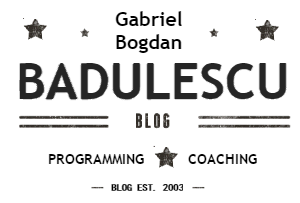Survive the confusion
 There are 122,000,635 sites out there according to NetCraft and the key activities are now picture sharing, videos, blogging, forums, reviews, social networking and .. communities. It’s a lot of place to lose yourself in and, as much as it looks crowded, it’s only the beginning of the internet. So whom do you trust and whom do you turn to for advice when you’re trying to make your way in cyberspace? How do you build your site and how do you promote it?
There are 122,000,635 sites out there according to NetCraft and the key activities are now picture sharing, videos, blogging, forums, reviews, social networking and .. communities. It’s a lot of place to lose yourself in and, as much as it looks crowded, it’s only the beginning of the internet. So whom do you trust and whom do you turn to for advice when you’re trying to make your way in cyberspace? How do you build your site and how do you promote it?
Ask yourself the following question : Do you trust brands or bloggers views over traditional marketing?
Can either of them be fully trusted ? The ultimate value of a web site has to be trust and probably that’s what this new age of the internet is all about. Ten years of exquisite marketing campaigns can be thrown down the drain in six months by bloggers and forums telling a different story. Bloggers can be more honest and less censored than the “marketing message” that is often too polished. On the other hand, reviews are usually subjective and often don’t offer the full understanding of the big picture. A Yahoo study found that 2 out of 3 regular social media users are advocates. Ford encouraged it’s engineers to blog about how to make their engines better and got a lot of free and very reliable exposure while it developed a better engine. It’s a total win for everybody and brands are moving marketing into the hands of professionals that speak about what they know. “Word of mouth” is powerful.
Social media brings exposure and gives you the actual pulse of the world. It also gives the marketers that same information and allows better targeting of the audience. Brands will always try to bring you in and make you switch, it’s just a matter of choice and the multitude of sources of information is just the opportunity to provide a more comprehensive view.
Building or Tuning a website up these days may be a little frightening as the rules appear to be changing as we speak. The information moves from site to site getting commented on and being presented in ways only XML and aggregators made possible. Presentation of content is no more an essential part as you may read this post from any rss reader, my newsletter or a post on a social media site.
People don’t go to portals any more, they demand a “come-to-me” environment and that is what aggregators, social networking pages, blogs and “web 2.0” applications stand for. To generate more confusion, more and more content is being user generated. The RSS feed icon illustrates probably the essence of what the web is about these days and new or updated sites should provide the feature as the important part is to be in the aggregated feed, on the screen, as the user picks the best-that-I-know-of content.
Bottom line, the time for canned content has gone. Portals are dead or mutating and news are delivered though aggregators rather than broadcasting companies websites, even if they usually originate there. Overhaul your site or start a new one thinking platform, collaboration, content sharing and reviewing. Let users create, move, tag and discuss as empowering them makes all the difference and provide core web services to open up to developers. Yes, your content will be scattered across the cyberspace and yet look how Flikr’s name is present everywhere and pays nothing for it.


![new-domain-extensions[1]](https://i0.wp.com/bogdan.bynapse.com/wp-content/uploads/sites/2/2007/12/new-domain-extensions1.png?resize=180%2C180&ssl=1)


